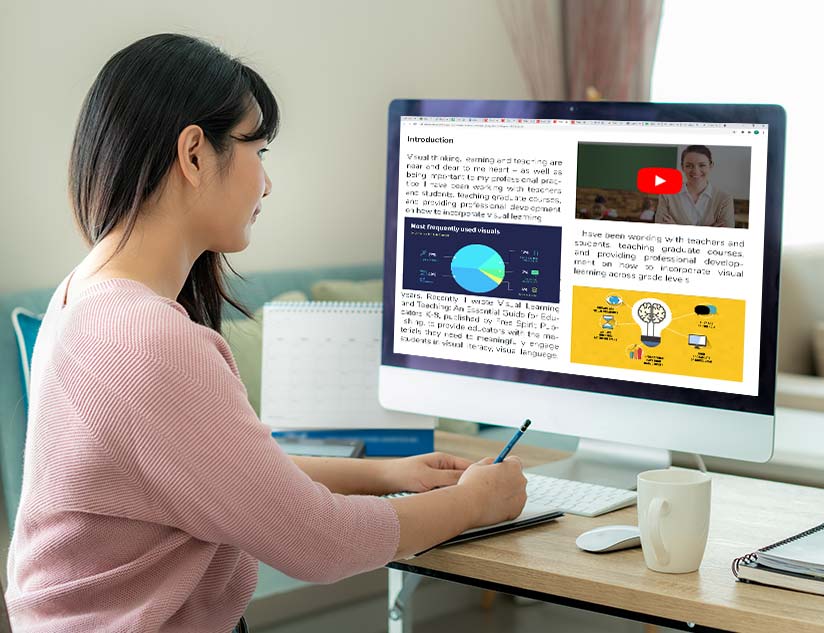Prominence of technology in schools, colleges and universities has reached new dimensions with the adoption of new technologies like artificial intelligence, gamification, mobile learning and more. Universities are also benefiting from technology as they are able to adopt elearning trends such as contextual learning, two-way conversational learning, using video as a means of informative content, and enhancing use of all available data.
Most of the developed countries have heavily invested in IT infrastructure and are focusing on learning that is facilitated by technology to match the dynamic learning styles of the millennial generation. According to the Center for Global Development, countries such as Indonesia, Philippines, South Africa, Botswana, Peru, and Jamaica are on the cusp of reaching universal primary education.
Digital Publishing Aiding Universities
By the end of 2018, e-book sales are forecasted to account for about a quarter of global book sales. Consumer e-books alone are projected to generate nearly 20 billion U.S. dollars in revenue by 2018. Education is a critical sector to have experienced innovations in technology. Starting from providing online content services, new learning platforms, along with software for learning management & assessment, technology has uplifted the learning environment for universities.
Distant learning makes up a large chunk of course offerings at most community colleges and universities. Some universities offer solely online internet based degrees. One of the biggest advantages of the online courses is that it makes continuing education a reality. With internet to the rescue, a single mother, working people, as well as students with financial troubles, can learn many new things without having to search out different options.
Mobile Distribution platforms like MagicBoxTM allow universities to launch their own online distance learning platform. MagicBoxTM provides e-Reader mobile apps for every platform, one click publishing/conversion services, and digital rights management services which allows users to repurpose content.
Revenue earned from consumer and educational electronic book publishing crossed $14.55 billion in 2016. With the digitization of books, publishers are now able to capture data about readers that was never seen before. Publishers are finding there is a huge market for digital content in the education space. As per the Florida Virtual Campus survey conducted in 2016, Unizin also accepted the model of bulk purchasing of e-textbooks. This doesn’t mean that the traditional libraries have been left to settle a path for themselves. The traditional library still exists for most universities. However, there seems to be a change of preference as students want a library at any time of the day, from a place of their choice.
Advantages of Online Textbooks
The increased use of electronic books and the emergence of e-Readers such as Kindle, Nook, iPad, and others have changed the way electronic books are perceived. Every day we encounter several online resources that are free to read, watch, or listen to. Colleges and universities are increasingly turning to open educational resources (OER) as a solution to the rapidly rising cost of college textbooks. Open educational resources is emerging as a potential educational tool as it accelerates the blurring of formal and informal learning, and provides authentic learning experiences. Digital publishing also aids the learning process for students with specific learning disabilities.
Here are some of the advantages of using digital textbooks to uplift the face of the education sector.
- With e-textbooks on tablets costing 50-60% less than print textbooks, cost of an electronic book is usually much lower than the cost of a printed book.
- eBooks are easily portable and offer the convenience of carrying and storage. Students can have as many books on their reading device, thus taking away the trouble of carrying half a dozen textbooks around the campus.
- With e-Textbooks, the user can immediately perform a word or phrase search, all with a simple screen touch. Then, there are some who grant the option of highlighting and taking notes. Notes can also be tagged to specific words or paragraphs of a book. This helps students to take clear notes in their digital textbooks.
- Another advantage of e-Textbooks is that they are regularly updated. Unlike printed textbooks that become obsolete quickly and have to be reprinted, e-Textbooks are more convenient, dynamic, and environment friendly.
- Students find e-Textbooks easier to use since the majority of students have been brought up in the technology age and use some form of technology every day. Most students have a cell phone and as e-Textbooks can be easily converted to audio files, it allows students to listen to their lessons when driving or walking to college.
- The idea of having students pay a small fee for course materials to cover an e-Textbook required by their professor would be an advantage for publishers, universities, and students. This would then enable the university to buy e-Textbooks in bulk, and that the student for a small fee would have a required e-Textbook for their courses.
- With e-Textbooks, there can be an easy switch from the traditional printed format to something that is easily accessible. Digital publishing also gives publishers the power to customize the e-Textbook according to their course, include lecture notes, practice tests, and links to relevant websites to enhance the course material.
The major reason for the extensive use of technology in educational practices is the need and emphasis of interactivity in learning. The widespread use of technology in various educational practices is due to the speed, accuracy, versatility, and cost involved. To learn about the future needs, it is necessary to have a qualitative approach to understand how students conceive and experience e-textbooks. Thus, it is important for higher education institutions, faculty, and students’ to keep an open mind and to be well aware of the new technological advances so they are not left behind in the technology driven age.
MagicBoxTM integrates latest technologies to provide digital platform to help enrich and enhance the overall learning experience. Interested for a discussion?












